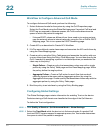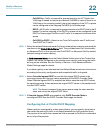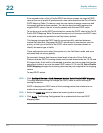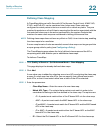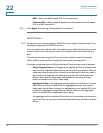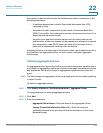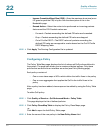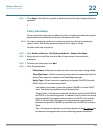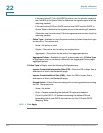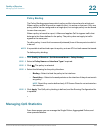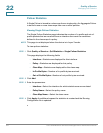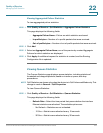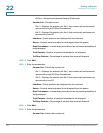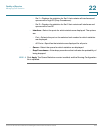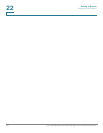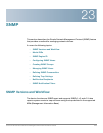
Quality of Service
QoS Advanced Mode
439 Cisco Small Business 300 Series Managed Switch Administration Guide
22
If the new value (0..7) is a CoS/802.1p priority, use the priority value and
the CoS/802.1p to Queue Table to determine the egress queue of all the
matching packets.
If the new value (0..63) is a DSCP, use the new DSCP and the DSCP to
Queue Table to determine the egress queue of the matching IP packets.
Otherwise, use the new value (1..8) as the egress queue number for all the
matching packets.
• Police Type—Available in Layer 2 system mode only. Select the policer type
for the policy. The options are:
- None—No policy is used.
- Single—The policer for the policy is a single policer.
- Aggregate—The policer for the policy is an aggregate policer.
• Aggregate Policer—Available in Layer 2 system mode only. If Police Type
is Aggregate, select a previously-defined (in the Aggregate Policer page)
aggregate policer.
If Police Type is Single, enter the following QoS parameters:
• Ingress Committed Information Rate (CIR)—Enter the CIR in Kbps. See a
description of this in the Bandwidth page.
• Ingress Committed Burst Size (CBS)—Enter the CBS in bytes. See a
description of this in the Bandwidth page.
• Exceed Action—Select the action assigned to incoming packets exceeding
the CIR. The options are:
- None—No action.
- Drop—Packets exceeding the defined CIR value are dropped.
- Out of Profile DSCP—IP packets exceeding the defined CIR are
forwarding with a new DSCP derived from the Out Of Profile DSCP
Mapping Table.
STEP 5 Click Apply.



